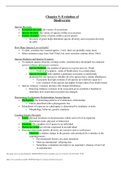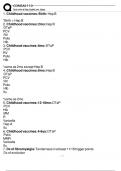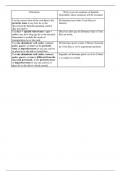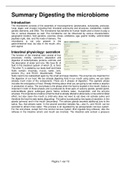Introduction
The present essay is composed of two distinct but thematically closely interlinked sections. In
part 1, values-based practice (VBP) is defined and explained, with four of its key process
elements: awareness, two-feet principle, user-centred care model and partnership described
in greater detail. In section 2, the importance of duty of candour is discussed.
Part 1
VBP is a skills-based approach to sound shared clinical decision-making primarily derived
from a branch of ordinary language philosophy known as philosophical value theory, that
focuses on the complex meanings attached to value terms and their implications (Fulford
2017:14). Originally developed in psychiatry by philosopher and psychiatrist K.W.M. Fulford,
VBP was soon generalized to other medical fields and health professions (Wieten 2015:8).
This approach aims to link and reconcile objective medical knowledge with the unique,
diverse and sometimes conflicting values of each person involved including the patient, their
families and the healthcare professionals, in order to facilitate balanced clinical decisions
(Fulford 2020). It is complementary to evidence-based practice (EBP) in providing patient care
-both in psychiatric and bodily medicine- in which scientific facts and people’s values are
equally considered (Fulford, King and Bergqvist 2020:32).
Values are subject to change through time and space; with the very term itself carrying
vastly different meanings to different people (Cassidy 2013:547). For clinical purposes, as
Fulford (2020:3) argued, values would be best understood as essentially ‘’anything that
matters’’, anything that carries importance to the individuals involved, including their wishes,
preferences and expectations. He further postulated that a more precise definition would
merely represent a distorted view of values, as it would inadvertently reduce the rich
complexity of meanings associated with the concept (Fulford 2013:540).
VBP offers practical tools for healthcare professionals to help them better understand,
more skilfully negotiate and work more effectively with diverse values in their practice
(Fulford 2020). It involves ten central process elements: awareness, reasoning, knowledge,
communication (clinical skills), user-centred care model, multidisciplinary service structure
1
, (aspects of professional relationships), the squeaky wheel, two-feet and science-driven
principles (links with EBP), and last but not least partnership in decision-making (Fulford and
van Staden 2020:20).
As Fulford (2011:87) argued, the very starting point for efficient VBP is awareness. This
foundational clinical skill involves being aware of the existence of diverse values and
recognizing them in others, while also being self-aware; that is knowing one’s own values and
understanding the ways in which these may influence and direct one’s own actions and
behaviours (McLean 2012: 161). Healthcare professionals should never impose their own
values on service users, nor should they simply assume that they know exactly what matters
to their patients (Fulford 2020: 6).
Another central component of VBP is the two-feet principle, which states that clinical
decisions are not merely informed by medical facts, but also by the values including the
wishes and preferences of all individuals involved (Fulford 2018:140). Therefore, this
approach is a partner to EBP in providing care that strives to be equally person-centred and
science-based (Fulford and van Staden 2020:33).
Patient-values-centred care model represents another constituent element of VBP, in
which service user’s values- actual and not merely assumed- are always prioritized (Fulford
2018:140). In VBP, the service user’s values are the ‘’first call for information’’ (Epstein,
Griffiths and Gunn 2018:36). However, the values of others concerned such as nurses and
relatives ought not to be ignored. This model is about being responsive and attentive to the
patient’s preferences and wants, while at the same time acknowledging and considering the
views of others involved, to ensure that clinical decisions meet both the needs and wishes of
the patient (Fulford, Peile and Carroll 2013). The NMC (2018) also greatly emphasizes the
importance of user-centredness in the code, stating that all people should be treated as
unique individuals; with their concerns and preferences listened and responded to.
Lastly, VBP advocates partnership in clinical decision-making; with service users and
providers working closely together in a mutually respectful manner to arrive at balanced
judgements (Fulford and van Staden 2020:20). This is in contrast to medical paternalism,
which implies a hierarchical doctor-patient relationship, with clinicians serving as decision-
makers and service users as more or less passive recipients of care (Murgic et al. 2015). VBP
2











